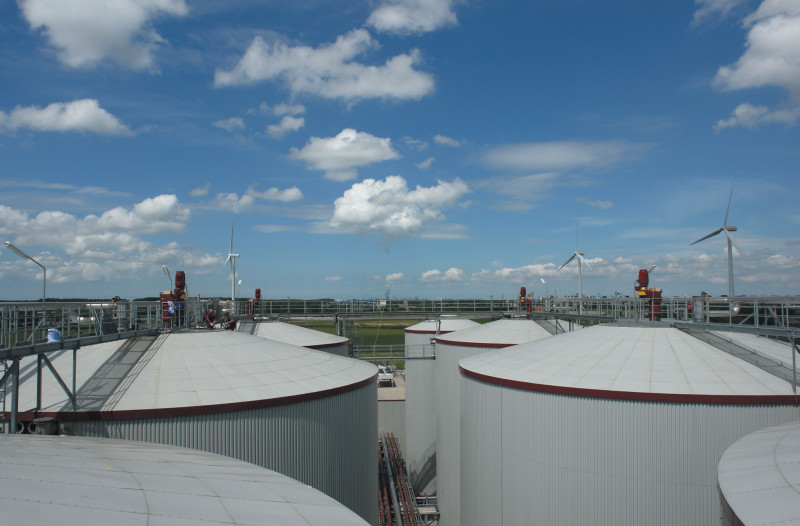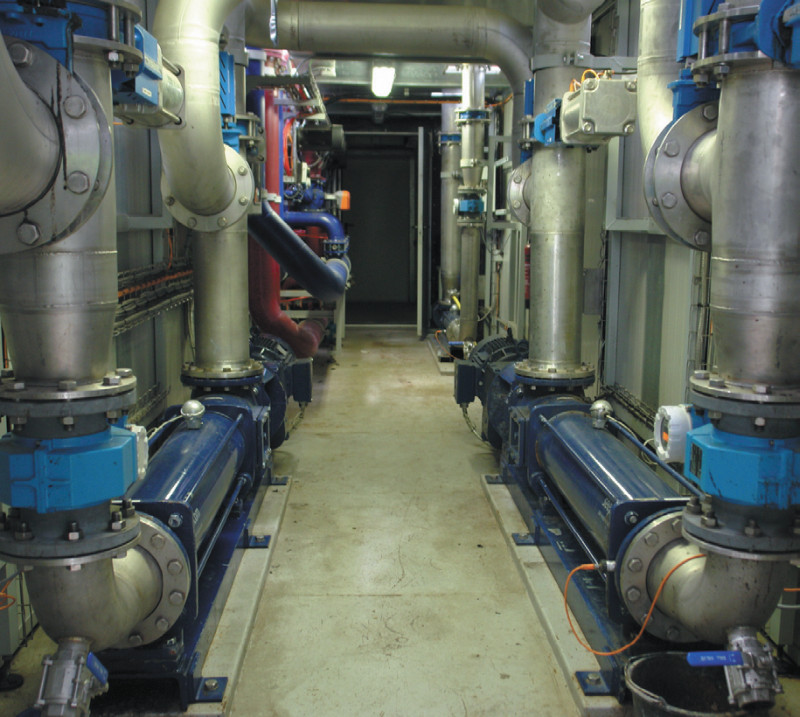 The Lijnco Green Energy Biomass Plant (LGE) in the Netherlands is using over 40 Danfoss VLT frequency converters in its process control systems to help increase the energy efficiency of the plant
The Lijnco Green Energy Biomass Plant (LGE) in the Netherlands is using over 40 Danfoss VLT frequency converters in its process control systems to help increase the energy efficiency of the plant
Anaerobic digestion is developing rapidly as an attractive proposition in sustainable energy production. Not only does it provide a solution for the treatment of all sorts of biodegradable waste, it also produces a constant supply of energy in the form of gas, which can be converted to electricity. The waste products are clean water and organic fertiliser, which can be completely reused.
The Lijnco Green Energy Biomass Plant (LGE) is one of the biggest sustainable energy projects in the Netherlands, costing more than EUR35.5m, and will produce gas which is then used to generate clean electricity.
Output constantly rising
 The project is being implemented by the Schücking Energy Group and Lijnco, and is managed by process technologist, Jupp Schücking. The technology for the biomass plant is being provided by HME Engineering for the industrial automation and process control systems, and Mosch Thermische Installaties (MTI) for the mechanical systems.
The project is being implemented by the Schücking Energy Group and Lijnco, and is managed by process technologist, Jupp Schücking. The technology for the biomass plant is being provided by HME Engineering for the industrial automation and process control systems, and Mosch Thermische Installaties (MTI) for the mechanical systems.
The LGE Biogas Plant currently processes more than 300 tonnes of biomass per day, with a capacity of 135,000 tonnes per year. At the end of last year the plant increased its production from 6,000m3 of gas per hour and 5MW of energy, to 10MW, with output expected to double again sometime in the future.
Scale is crucial
Scale is extremely important in biomass plants because the fermentation process requires constant monitoring. Fermentation involves a large number of bacteria that live in a delicate balance with the various organic substances. The rate at which organic substances are digested varies considerably.
For instance, wheat is digested in 40 days, while glycerine takes only 24 hours. Maize, by contrast, takes a full 80 days. This biological process must be constantly fed, just like farm animals. If there is too little input, the digestion process will stop, and if you overfeed, the mass will start to froth and overflow. Production down-time is highly undesirable, because it can easily take eight days of extra effort to get the process going again.
Anaerobic digestion is therefore not something that farmers can do on the side. The process requires specially trained staff to manage the processes, and this is only possible if the scale is right.
Setting new standards
Heino Oltwater of HME Engineering commented, “We want this plant to set the standard and be a model that we can reuse in subsequent projects. We drafted the functional requirements for the electrical system. Important elements in this are the 40 or so Danfoss VLT frequency converters, including a large number of 45kW drives.
“These are used, for instance, to drive the many pumps and mixers that are essential in keeping the fermentation process going. There are ten 22kW and 30kW Seepex pumps between the large tanks. This is the first time that I have used Danfoss frequency converters. Van Egmond Elektrogroothandel in Doetinchem recommended the Danfoss VLT frequency converters because they have two percent higher efficiency. They therefore contribute to the clean credentials of the plant. This also applies to the high efficiency electric motors used in the drives.”
The frequency converters were supplied by Van Egmond – a Danfoss distribution partner which can supply all frequency converters from stock, allowing the entire construction process to proceed smoothly.
In addition, Van Egmond Industrial Automation built the accompanying panels and developed the control and visualisation software for the plant.
A wide range of VLT Automation Drives, from 1-45kW help control the many intricate processes that lead to clean energy, supported by networking and safety options.
Danfoss
www.danfoss.com
T: 0870 608 0008

